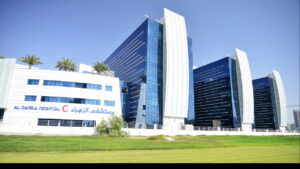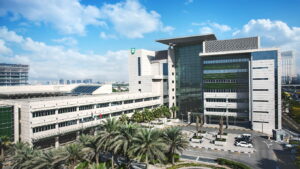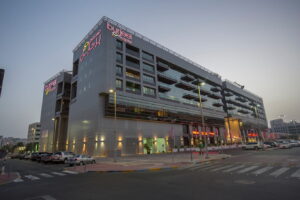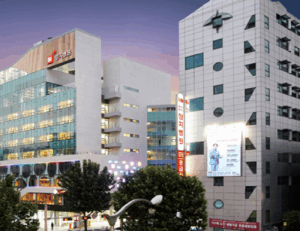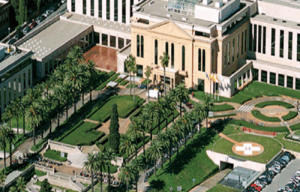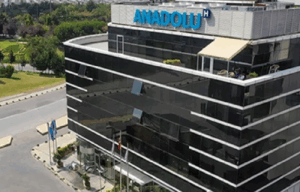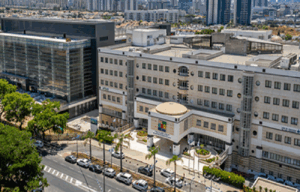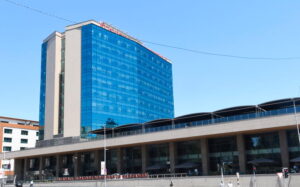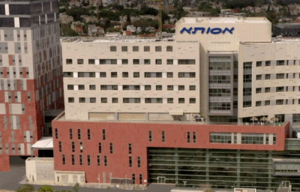Abdominoplasty (tummy tuck)
Abdominoplasty is a plastic surgery procedure performed to restore the aesthetic appearance of the abdomen. It helps create balanced proportions of the soft tissues of the anterior abdominal wall. In modern surgical environments, this procedure is considered safe.
The type of abdominoplasty is selected based on the patient’s initial expectations, overall health status, and clinical presentation (including any comorbid conditions and degree of excess tissue).
Three types of abdominoplasty used in top European clinics:
- Mini-abdominoplasty: the operation is performed in the lower abdomen, and the surgeon does not access the area above the navel. This method removes the “apron” of tissue hanging over the pubic area.
- Classical abdominoplasty: involves repositioning of the navel.
- Endoscopic abdominoplasty: the surgeon uses a video endoscope inserted into the abdominal cavity through small incisions.
Indications for abdominoplasty:
- Excess fat in the abdominal area
- Stretch marks
- Loose or sagging skin after significant weight loss
- Hanging tissue (“apron”) in the lower abdomen
Procedure features in leading global clinics
Plastic surgery centers that offer state-of-the-art abdominoplasty techniques implement the following innovations:
Modified techniques. The “J-shaped” incision method uses a J-formed cut to improve scar aesthetics and reduce visibility.
Self-absorbing sutures. Eliminate the need for suture removal and promote faster healing.
Modern anesthesia methods. Spinal or epidural anesthesia is used to enhance patient comfort and reduce postoperative pain.
Lipofilling. Transplantation of fat tissue enriched with stem cells to improve skin quality (fat is transferred from one area of the body to another).
Top clinics
-
 Freiburg, Germany University Hospital Freiburg
Freiburg, Germany University Hospital Freiburg -
 Ramat Gan, Israel Sheba clinic
Ramat Gan, Israel Sheba clinic -
 Istanbul, Turkey Acibadem Altunizade Clinic
Istanbul, Turkey Acibadem Altunizade Clinic -
 Istanbul, Turkey Acıbadem Ataşehir Clinic
Istanbul, Turkey Acıbadem Ataşehir Clinic -
 Antalya, Turkey Medical Park Antalya Clinic
Antalya, Turkey Medical Park Antalya Clinic -
 Dubai, UAE NMC Healthcare
Dubai, UAE NMC Healthcare -
 Istanbul, Turkey Shishli Memorial Clinic.
Istanbul, Turkey Shishli Memorial Clinic. -
 Dubai, UAE Al Zahra Hospital
Dubai, UAE Al Zahra Hospital -
 Dubai, UAE American Hospital Dubai
Dubai, UAE American Hospital Dubai -
 Graz, Austria Leech Private Clinic
Graz, Austria Leech Private Clinic -
 Abu Dhabi, UAE Burjeel Hospital Abu Dhabi
Abu Dhabi, UAE Burjeel Hospital Abu Dhabi -
 Vienna, Austria Debling Private Clinic
Vienna, Austria Debling Private Clinic -
 Vienna, Austria Confraternity Private Clinic.
Vienna, Austria Confraternity Private Clinic. -
 Dubai, UAE Burjeel Hospital Private Multidisciplinary Clinic
Dubai, UAE Burjeel Hospital Private Multidisciplinary Clinic -
 Vienna, Austria Rudolfinerhaus Private Clinic.
Vienna, Austria Rudolfinerhaus Private Clinic. -
 Hamburg, Germany Asklepios Nord Heidberg
Hamburg, Germany Asklepios Nord Heidberg -
 Istanbul, Turkey “Memorial Bahçelievler” Clinic
Istanbul, Turkey “Memorial Bahçelievler” Clinic -
 Lausanne, Switzerland Clinique Montchoisy
Lausanne, Switzerland Clinique Montchoisy -
 Montreux, Switzerland Clinique La Prairie
Montreux, Switzerland Clinique La Prairie -
 Nyon, Switzerland Clinique Genolier
Nyon, Switzerland Clinique Genolier -
 Antalya, Turkey Memorial Antalya Hastanesi
Antalya, Turkey Memorial Antalya Hastanesi -
 Seoul, South Korea JK Plastic Surgery Center
Seoul, South Korea JK Plastic Surgery Center -
 Seoul, South Korea H+ Yangji Hospital
Seoul, South Korea H+ Yangji Hospital -
 Barcelona, Spain QuironSalud Barcelona Hospital
Barcelona, Spain QuironSalud Barcelona Hospital -
 Barcelona, Spain Medical Center "Teknon"
Barcelona, Spain Medical Center "Teknon" -
 Barcelona, Spain University Hospital Barnaclinic+
Barcelona, Spain University Hospital Barnaclinic+ -
 Madrid, Spain University Clinic HM Madrid
Madrid, Spain University Clinic HM Madrid -
 Seoul, South Korea Dream Plastic Surgery Clinic
Seoul, South Korea Dream Plastic Surgery Clinic -
 Madrid, Spain University Hospital HM Monteprincipe
Madrid, Spain University Hospital HM Monteprincipe -
 Gebze, Turkey Anadolu Clinic
Gebze, Turkey Anadolu Clinic -
 Zurich, Switzerland Hirslanden Clinic
Zurich, Switzerland Hirslanden Clinic -
 Madrid, Spain Quiron Salud University Hospital
Madrid, Spain Quiron Salud University Hospital -
 Lugano, Switzerland Saint Anna Clinic
Lugano, Switzerland Saint Anna Clinic -
 Petah Tikva, Israel Schneider Children's Medical Center
Petah Tikva, Israel Schneider Children's Medical Center -
 Bursa, Turkey Doruk Nilüfer Hospital
Bursa, Turkey Doruk Nilüfer Hospital -
 Seoul, South Korea SNU Plastic Surgery Clinic
Seoul, South Korea SNU Plastic Surgery Clinic -
 г. Женева, Швейцария Клиника «Женераль-Болье»
г. Женева, Швейцария Клиника «Женераль-Болье» -
 г. Женева, Швейцария Hirslanden Clinique La Colline
г. Женева, Швейцария Hirslanden Clinique La Colline -
 г. Стамбул, Турция Клиника Флоренс Найтингейл
г. Стамбул, Турция Клиника Флоренс Найтингейл -
 г. Петах-Тиква, Израиль Медицинский центр имени Ицхака Рабина
г. Петах-Тиква, Израиль Медицинский центр имени Ицхака Рабина -
 г. Иерусалим, Израиль Медицинский центр “Хадасса”
г. Иерусалим, Израиль Медицинский центр “Хадасса” -
 г. Тель Авив, Израиль Медицинский центр “Ассута”
г. Тель Авив, Израиль Медицинский центр “Ассута”






